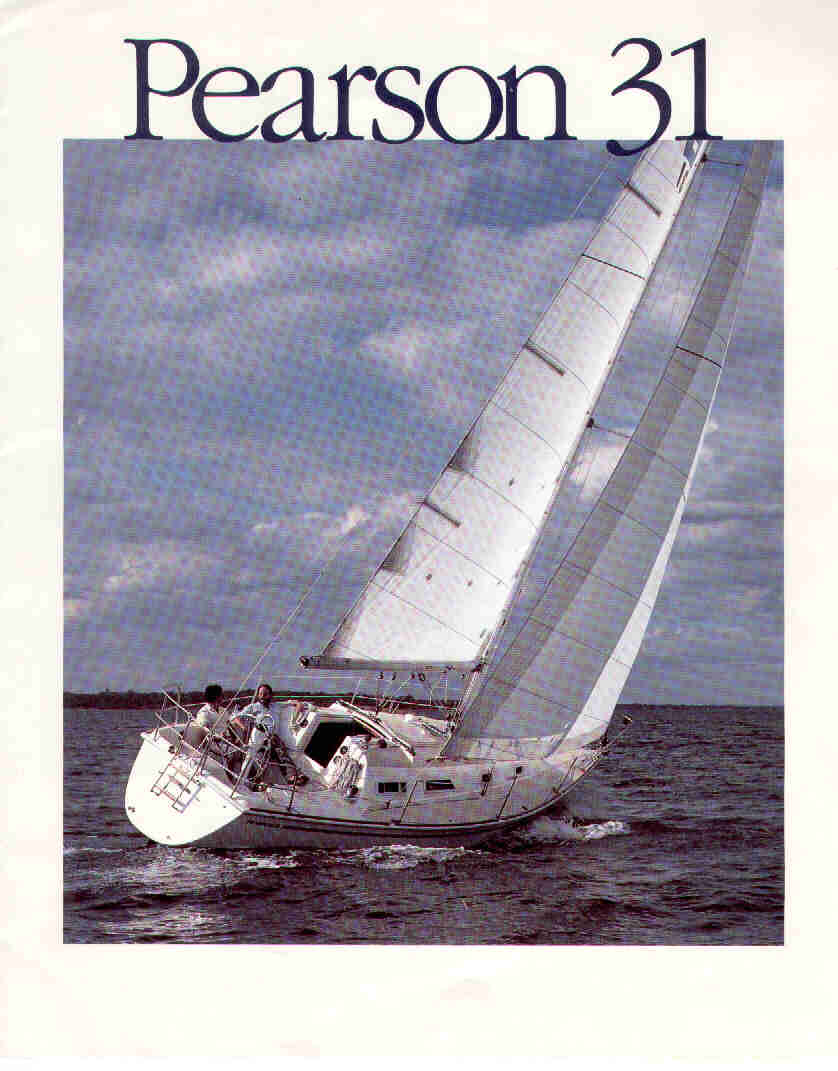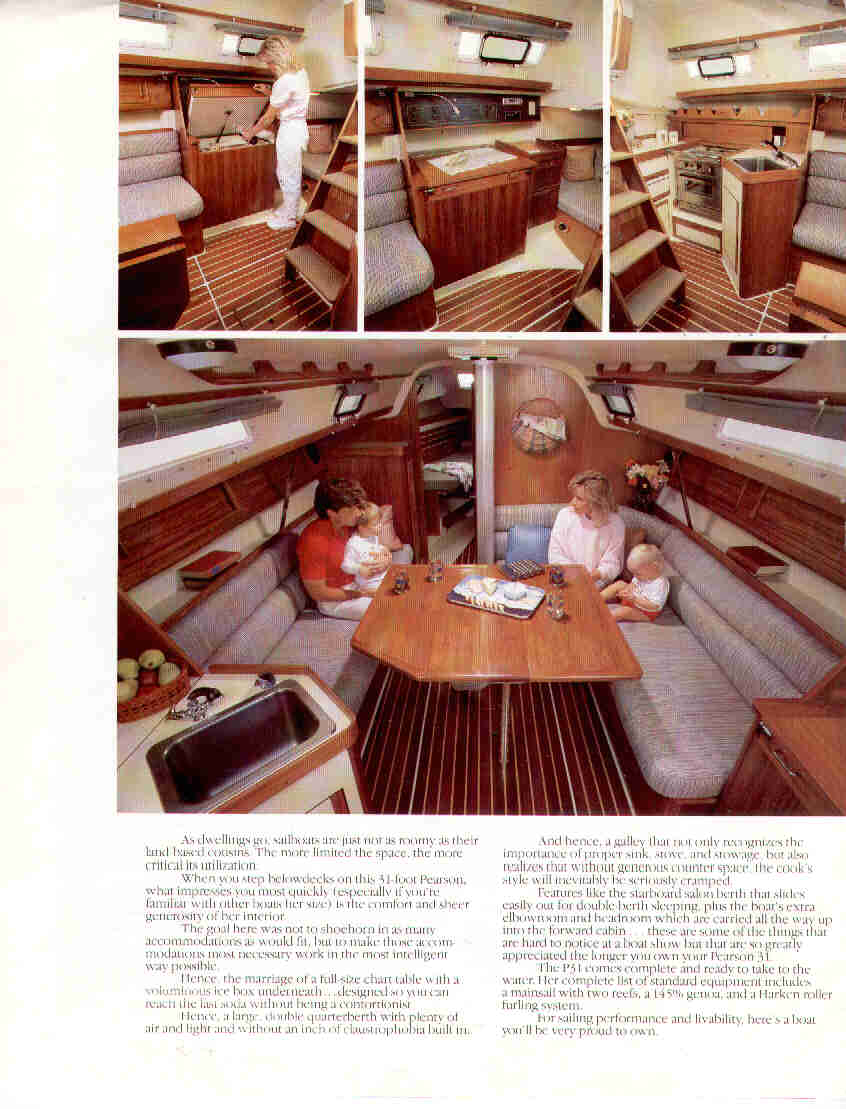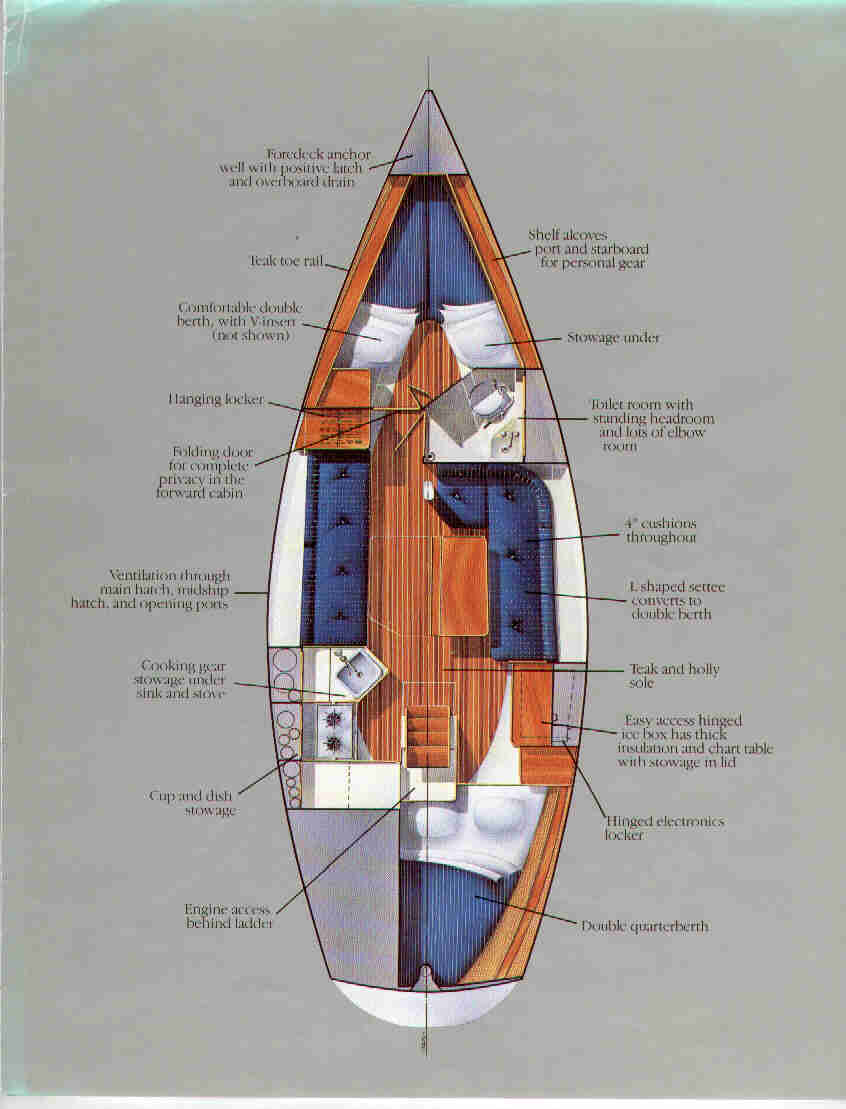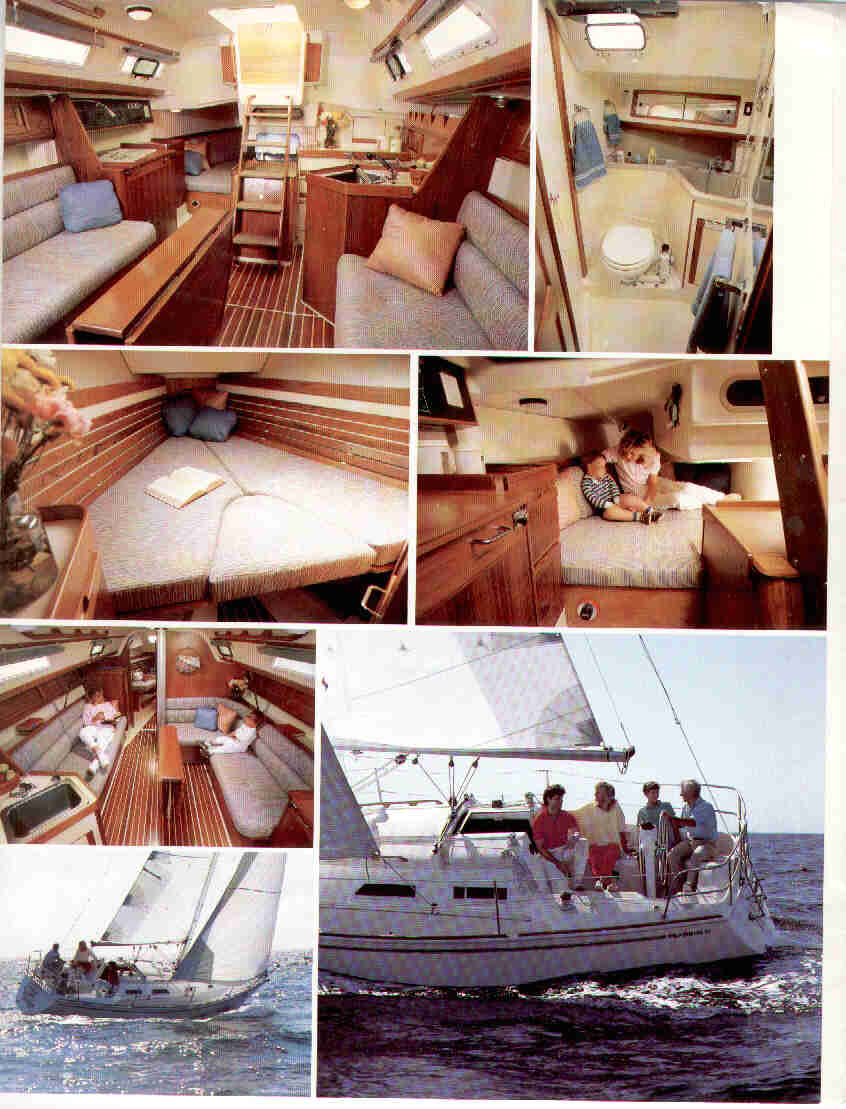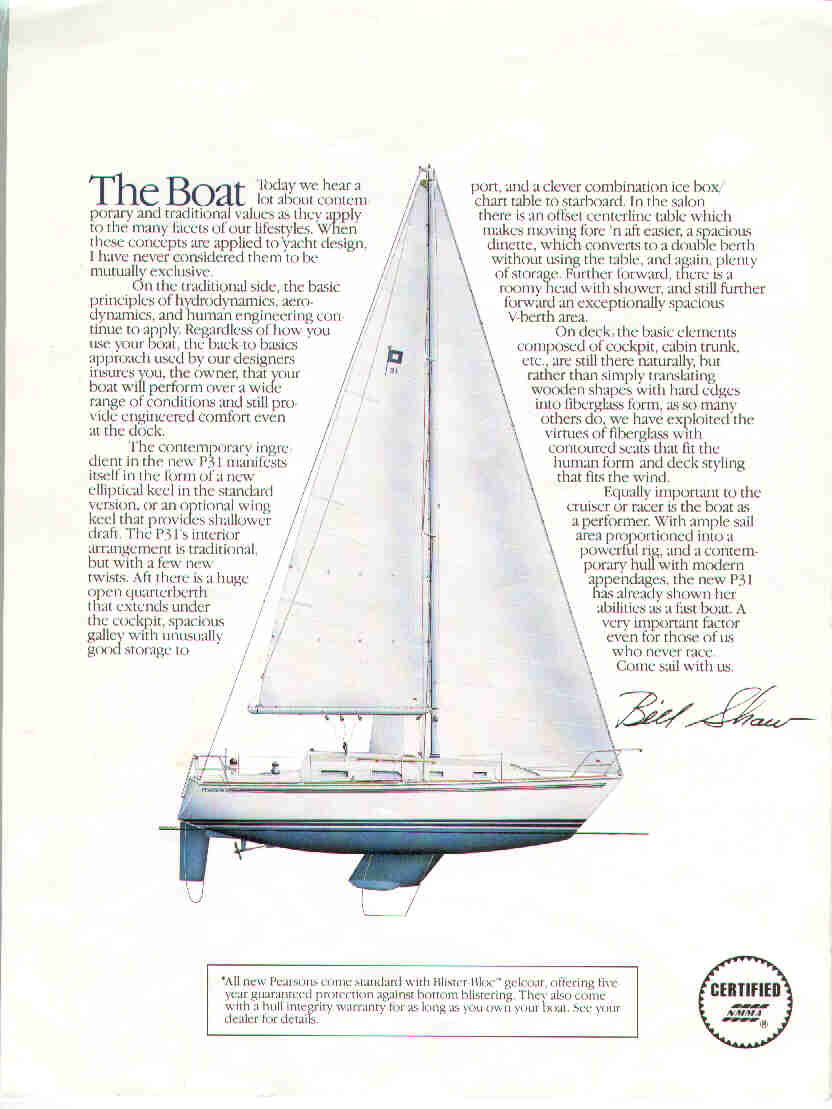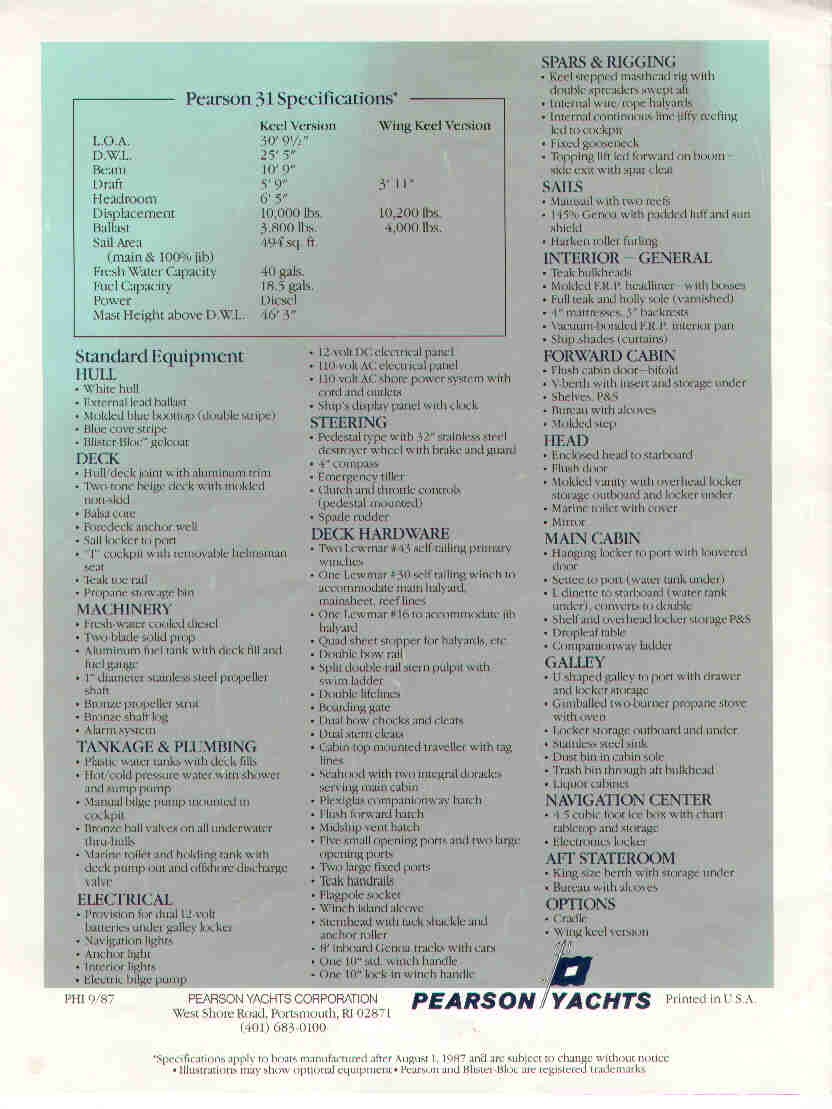The Pearson 31-2 : 1987–1991

In 1987 the Pearson 31-2 went into production as a new design by Bill Shaw
Contemporary and Traditional Values
Bill Shaw said; "With ample sail area proportioned into a powerful rig, and a contemporary hull with modern appendages, the new P31 has already shown her abilities as a fast boat". It was produced until 1991 and available with a standard or shoal draft wing keel. Hull number 268 was the last boat out of the Portsmouth factory before closing for good in 1991.
In 1996 Cal-Pearson re-introduced the P31 during a short lived revival of the Pearson brand.
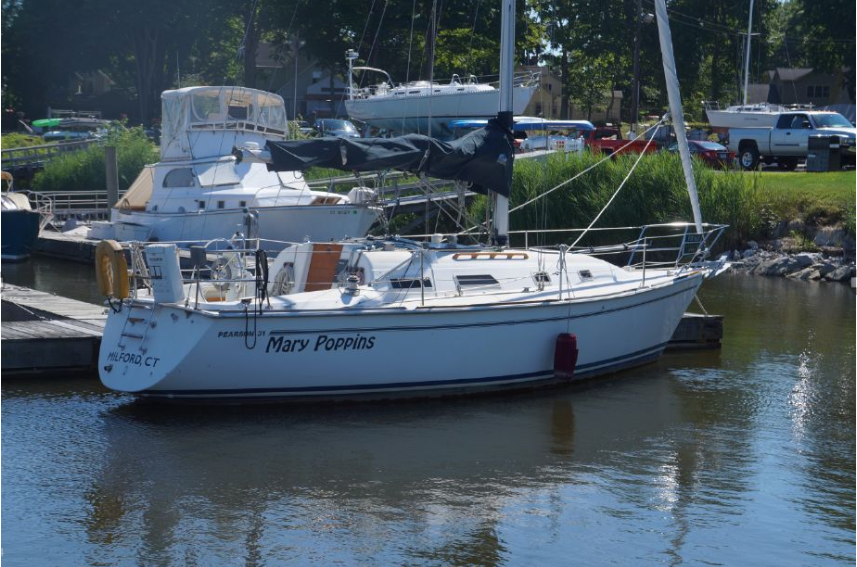
Pearson 31-2
theBoat
Today we hear a lot about contemporary and traditional values as they apply to the many facets of our lifestyles. When these concepts are applied to yacht design, I have never considered them to be mutually exclusive.
On the traditional side, the basic principles of hydrodynamics, aerodynamics, and human engineering continue to apply. Regardless of how you use your boat, the back to basics approach used by our designers insures you, the owner, that your boat will perform over a wide range of conditions and still provide engineered comfort even at the dock.
The contemporary ingredient in the new P31 manifests itself in the form of a new elliptical keel in the standard version, or an optional wing keel that provides shallower draft. The P31's interior arrangement is traditional, but with a few new twists. Aft there is a huge open quarterberth that extends under the cockpit, spacious galley with unusually good storage to port, and a clever combination ice box/chart table to starboard. In the salon there is an offset centerline table which makes moving fore 'n aft easier, a spacious dinette, which converts to a double berth without using the table, and again, plenty of storage. Further forward, there is a roomy head with shower, and still further forward an exceptionally spacious V-berth area.
On deck, the basic elements composed of cockpit, cabin trunk, etc., are still there naturally, but rather than simply translating wooden shapes with hard edges into fiberglass form, as so many others do, we have exploited the virtues of fiberglass with contoured seats that fit the human form and deck styling that fits the wind.
Equally important to the cruiser or racer is the boat as a performer. With ample sail area proportioned into a powerful rig, and a contemporary hull with modern appendages, the new P31 has already shown her abilities as a fast boat. A very important factor even for those of us who never race. Come Sail With Us...

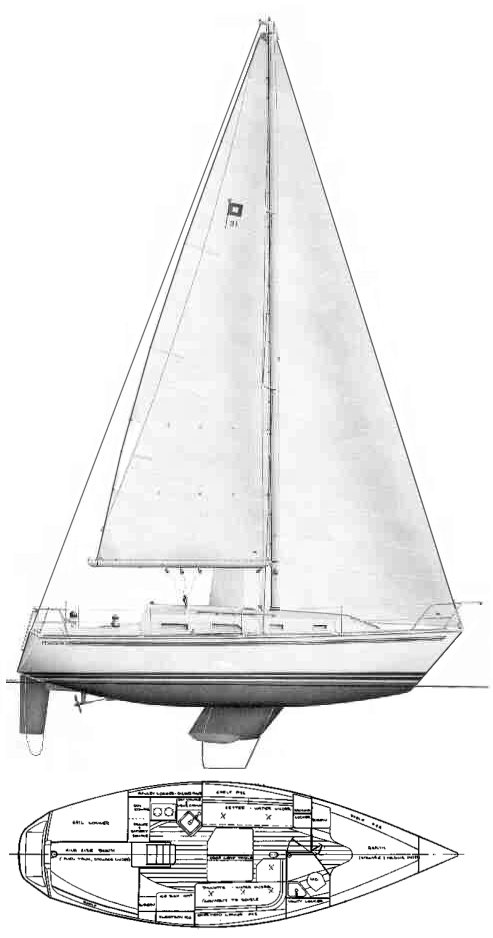
Pearson 31-2 By The Numbers
Specifications*
| LOA (Overall Length) | 30.8' |
| LWL (Waterline Length) | 25.4' |
| Beam | 10.8' |
| Draft | 5.6' [4' Wing] |
| Displacement** | 10,000 lbs [10,200] |
| Ballast | 3,800 lbs [4,000] |
| Sail Area | 494 sq ft |
| Mast Height (above D.W.L.) | 46.3' |
| Cockpit Length | |
| Auxillary Power | Diesel |
| Foretriangle Area | 273 sq ft |
| Mainsail Area | 221 sq ft |
| I - Foretriangle Height | 42.5' |
| J = Foretriangle Base | 12.8' |
| P - Mainsail Hoist | 36.8' |
| E - Mainsail Foot | 12.0' |
| *approximate by Pearson Yachts Inc. |
Technical Data
| Designer | Bill Shaw |
| Years Built | 1987 - 1991 |
| Hull Speed | 6.75 |
| SA/D - Sail Area to Displacement | 17 |
| DLR or D/L - Displacement to Length Ratio | 272 |
| BR – Ballast Ratio | 38% |
| L/B – Length to Ballast | 2.86 |
| LWL/B – Waterline Length to Ballast | 2.36 |
| OR – Overhang Ratio | 17% |
| CSF – Capsize Screening Formula | 2.00 |
| MCR – Motion Comfort Ratio | 24 |
| M/F – Main to Foretriangle Ratio | 0.81 |
| PHRF (avg) – Performance Handicap Rating | 156/165 |
P31-2 Standard Equipment
- White Hull
- External lead ballast
- Molded blue boottop (double stripe)
- Blue cove stripe
DECK
- Hull/deck joint with molded non-skid
- Balsa core
- Foredeck anchor well
- Sail locker to port
- "T" cockpit with removable helmsman seat
- Teak toe rail
- Propane stowage bin
MACHINERY
- Fresh-water cooled diesel
- Two-blade solid prop
- Aluminum fuel tank with deck fill and fuel gauge
- 1" diameter stainless steel propeller shaft
- Bronze propeller strut
- Bronze shaft log
- Alarm system
TANKAGE & PLUMBING
- Plastic water tanks with deck fills
- Hot/Cold pressure water with shower and sump pump
- Manual bilge pump mounted in cockpit
- Bronze ball valves on all underwater thru-hulls
- Marine toilet and holding tank with deck pump out and offshore discharge valve
ELECTRICAL
- Provision for dual 12-volt batteries under galley locker
- Navigation lights
- Anchor light
- Interior lights
- 12-volt DC electrical panel
- 110-volt AC electrical panel
- 110-volt AC shore power system with cord and outlets
- Ship’s display panel with clock
STEERING
- Pedestal type with 32" stainless steel destroyer wheel with break and guard
- 4’ compass
- Emergency tiller
- Clutch and throttle controls pedestal mounted
- Space rudder
DECK HARDWARE
- Two Lewmar #43 self-tailing primary winches
- One Lewmar #30 self-tailing winch to accommodate main halyard, mainsheet, reef lines
- One Lewmar #16 to accommodate jib halyard
- Quad sheet stopper for halyards, etc.
- Double bow rail
- Split double rail stern pulpit with swim ladder
- Double lifelines
- Boarding gate
- Dual bow chocks and cleats
- Dual stern cleats
- Cabin-top mounted traveller with tag lines
- Seahood with two integral dorades serving main cabin
- Plexiglass companionway hatch
- Flush forward hatch
- Midship vent hatch
- Five small opening ports and two large opening ports
- Two large fixed ports
- Teak handrails
- Flagpole socket
- Winch island alcove
- Stemhead with tack shackle and anchor roller
- 8’ inboard genoa tracks with cars
- One 10" std. Winch handle
- One 10" lock-in winch handle
SPARS & RIGGING
- Keel stopped masthead rig with double spreaders swept aft
- Internal wire/ rope halyards
- Internal continuous-line jiffy reefing led to deck
- Fixed gooseneck
- Topping lift led forward on boom side exit with spar cleat
INTERIOR-GENERAL
- Teak bulkheads
- Molded FRP headliner- with bosses
- Full teak and holly side (varnished)
- 4" mattresses, 3" backrests
- Vacuum-bonded FRP interior pan
- Curtains
FORWARD CABIN
- Flush cabin door- bifold
- V-berth with insert and storage under
- Shelves and P& S
- Bureau with alcoves
- Molded step
HEAD
- Enclosed head to starboard
- Flush door
- Molded vanity with overhead locker storage outboard and locker under
- Marine toilet with cover
- Mirror
MAIN CABIN
- Hanging locker to port with louvered door
- Settee to port (water tank under)
- L-dinette to starboard (water tank under), converts to double
- Shelf and overhead locker storage P & S
- Dropleaf table
- Companionway ladder
GALLEY
- U-shaped galley to port with drawer and locker storage
- Gimballed two-burner propane stove with oven
- Locker storage outboard and under
- Stainless steel sink
- Dust bin in cable sole
- Trash bin located through aft bulkhead
- Liquor cabinet
NAVIGATION CENTER
- 4.5 cubic foot ice box with chart tabletop and storage
- Electronics locker
AFT STATEROOM
- King-size berth with stowage under
- Bureau with alcoves
OPTIONS
- Cradle
- Wing keel version
Resources
Bill Crain's 1991 P31-2 (#268) was the last boat out of the factory before closing for good in 1991. He made a digital copy of his owners manual and contributed it for sharing on the web. The manual has a fair amount of detail for the 31-2 and there is a fair amount of cross over for other Pearson boats on the line at the end of production. The models include: P27, P28-2, P33-2, P34-2, P35-2, P36-2, P37-2, P39-2, P38.
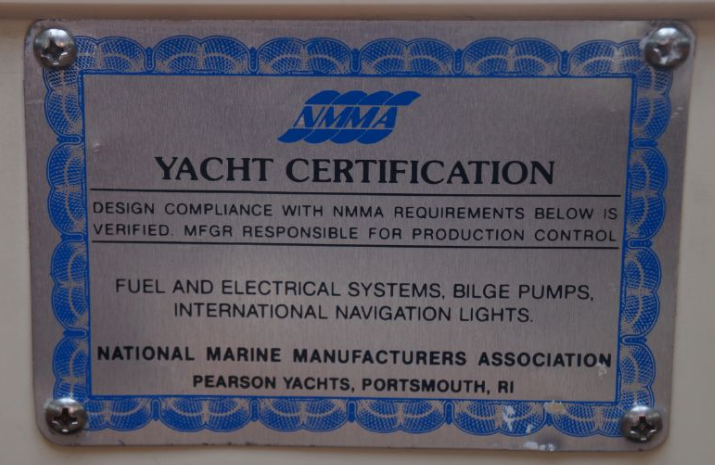
Pearson Yachts Brochure
Click to enlarge

